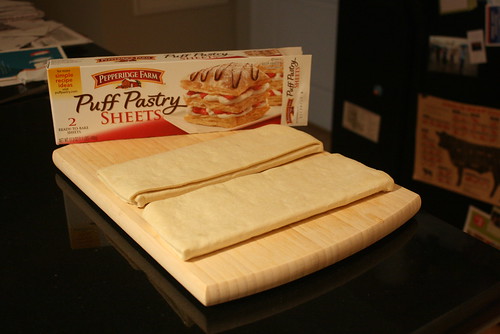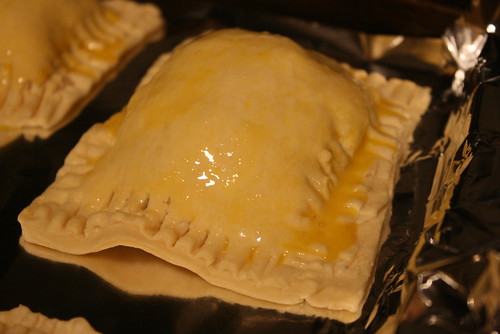By now you've probably noticed that I didn't get a chance to update the blog while on vacation in Vietnam. It was an exciting, memorable and jam-packed adventure that left little downtime for updates. But now that I'm back and have been able to decompress and (mostly) recover from the jet lag, it's time for the official recap.
June 21-24: Saigon/Mekong Delta
We began our journey in the south, arriving in Vietnam's most populous city. Saigon (formally known as Ho Chi Minh City) is busy, crowded and noisy at almost all hours of the day. Once the sun rises, you can hear the sounds of horns honking and motorbike traffic. In a city of over 9 million people, almost half the population runs on motorbikes. While there are road signs, traffic lights and marked lanes, the road rules -- or lack thereof -- in Vietnam are basically "anything goes," which makes crossing the street no easy task. As taxi passengers and pedestrians, we had no shortage of close calls to keep us on our toes.
On our second full day, we took a short trip out of Saigon to visit the Cu Chi Tunnels, an intricate 75-mile network of underground tunnels and bunkers used by the Viet Cong during the war. Parts of the tunnels have been greatly expanded to accomodate tourists' bodies, and we had the chance to crawl through a 50-meter section which proved both a little scary and also exhausting. Our visit here was one of several interesting history lessons we'd get from the Vietnamese government perspective, depicting the American military forces in less-than-stellar light.
On our last full day in Saigon, we took another trip outside the city to visit the Mekong Delta, the region where the Mekong River empties out into the South China Sea. From the town of Cai Be, we took a small boat and toured the river, passing by the floating market with people selling and exchanging various goods, and making stops to see how rice paper, caramel candy, salt, and other local products are made.
June 25-28: Hoi An
After wrapping up our tour of the South, we boarded a short flight to Da Nang, in the central region of the country, where upon arrival we drove a short way to the coastal city of Hoi An, which is one of my favorite destinations in Vietnam.
Hoi An has a very small-town feel and it offers a nice, quiet change of pace from the hustle and bustle of Saigon. The town was a prominent shipping and trading port for Chinese and Japanese merchants in the 16th-17th centuries, and the architecture today still reflects these ancient foreign influences, giving it an old world charm. Add in the traditional colorful paper lanterns that light the streets at night, and the typical Hoi An scene almost feels like it's out of an amusement park. Beautiful, but somewhat surreal.
We spent most of our time at the beach; our ocean-front rooms at the Victoria Hoi An Beach Resort were pretty spectacular and gave us perfect views of the incredible sunrise over the water. On our second day we took a day trip to snorkel and scuba off the Cham Islands (courtesy of
Rainbow Divers in Hoi An), a small series of islands about 10 miles offshore. Our group spotted lots of fun creatures in the sea, including pufferfish, stonefish, and barracudas.
We also took a morning visit to the My Son Sanctuary, an area of abandoned and partially ruined Hindu temples built by the Champa people between the 4th and 14th centuries. At the time of discovery by the French in the late 19th century, there were around 70 structures. During the war, bombs fell in the My Son region, destroying many of the buildings and leaving only around 25 standing in various states of ruin today.
June 29-30, July 6: Hanoi
Our next in-country flight took us to Vietnam's capital, Hanoi, in the northern region of the country. Hanoi is the country's second-biggest city (after Saigon), and while it's still crowded and buzzing with motorbikes, the feel of the city itself feels more organized and developed than its southern counterpart. However, from a personal standpoint, the country itself feels a little less warm and hospitable than Saigon.
At visits to museums and other tourist attractions we faced less friendly people and -- at the Ho Chi Minh Mausoleum in particular -- very, very serious guards. With the strict dress code, no-talking, no arms-crossed policies (among other rules and restrictions), there is a lot of ceremony that goes into the visit to see the embalmed former President's body for only a few seconds. We also visited the "Hanoi Hilton," or the Hoa Lo Prison, where John McCain spent part of his time as a prisoner of war after his plane was shot down over Truc Bach Lake in Hanoi.
We also spent a decent amount of time walking around and doing souvenir shopping in the city, close to Hoan Kiem Lake, one of the Hanoi's scenic attractions and a well-known meeting point in the center of the city.
July 1-2: Sapa
Our stay in Hanoi was brief, as we ventured farther north to Sapa, located in the northernmost region of Vietnam, only miles from the China border. This was the one destination on the trip where my family had always wanted to visit, but hadn't gotten a chance to, so we were all pretty excited to get the chance to check it out. The overnight train was an experience in itself -- four of us packed tightly to a room with bunks that barely fit John's 6'+ frame, the train car shaking turbulently enough that I thought we might derail multiple times throughout the night, and being disrupted by loud Vietnamese voices shouting in the hallway and an attempt by some people to enter our bunk. Needless to say, we were happy to arrive at our next destination.
Nestled in the mountains and thus significantly cooler than any other place we'd been, Sapa was a nice change of pace in regard to temperature, terrain, and lifestyle. Known for its tiered rice paddies that cover miles upon miles of the region's mountainous landscape, Sapa is among the most picturesque places I've ever visited, anywhere.
My first surprise came at how easily and closely we were able to interact with the Hmong people, who make up the largest portion of the ethnic minority groups in the region. I thought access to them would be limited, but then I remembered we were the foreigners coming into their territory, so almost immediately we were swarmed by locals who wanted to get to know more about us while trying to sell us their handicrafts.

One of the most amazing and unexpected experiences we had in Sapa was hiking down from the top of the mountain, about 7km down to a Hmong village. It had rained in the morning, which left the terrain muddy, slick and treacherous. There were a handful of slips and falls among our group, but luckily nothing major. We were followed and guided for the duration of the trip by a group of Hmong women, for whom we became extremely grateful. While we awkwardly trudged our way through muddy slopes and creeks and around rice paddies and corn fields, the women -- some with babies strapped to their backs -- casually made their way down in what appeared to be non-gripping plastic sandals, offering a hand or pointing out where we should step to avoid further accidents. It was the by the far an eye-opening experience that gave us the closest view into the daily lives of the local people, and the long and adventurous trek we made with them was both memorable and priceless.
July 3-5: Ha Long Bay
After another overnight train ride back to Hanoi from Sapa, we hopped on the bus again for a 3-hour drive to Ha Long Bay, our last major stop on our long journey through the country. Ha Long Bay is known for its series of nearly 2,000 small islands of various shapes and sizes dotting the water. While a bit of research will tell you more about the 500-million-year evolution of the limestone rock formations (the area was originally mainland that was later flooded before undergoing a series of tectonic plate movements, erosion, and sea movement leaving it in its current state), most people will tell you about the legend of Ha Long (literally meaning "Descending Dragon").
The story goes that long ago, when the Vietnamese were fighting Chinese invaders, the gods sent a family of dragons to help them defend their land. The dragons descended upon Ha Long Bay, spitting out jewels and jade, which, upon making contact with the sea, turned into the islands and islets to form a strong fortress against the invaders. The dragons ultimately fell in love with the area and decided to stay, thus creating "Ha Long Bay" as we know it.

We spent two nights and three days aboard a Bhaya cruise boat on the Bay. This was the first time I'd done an overnight trip (versus a day trip) on Ha Long Bay, which turned out to be well worth it. Aside from the usual stops into various tourist-friendly caves, we were able to really experience and explore the area on our own. Our group of 13 was able to board a smaller boat that took us to remote spots on the Bay and we kayaked our way into secret lagoons and through tiny tunnels. It was another moment that felt surreal and the whole day was definitely one of my trip highlights.

As you might imagine, despite all the fun we were pretty pooped from living out of a suitcase during our 16-day South-to-North Vietnam tour. It was definitely a long day of travel back home, and heading back to work the following day was no picnic, but it was all worth it for an amazing vacation with a great group of people. And now, a special shout-out to my parents, and especially my mom, for organizing every last detail and arranging a perfect itinerary for such a huge group! Can't wait for the next time...
For more photos/video, see my Vietnam 2010 photo collection on Flickr.












